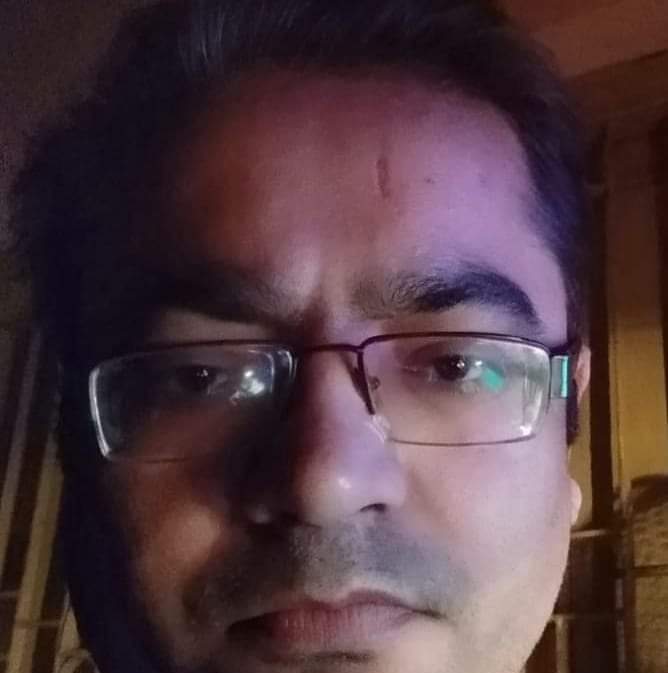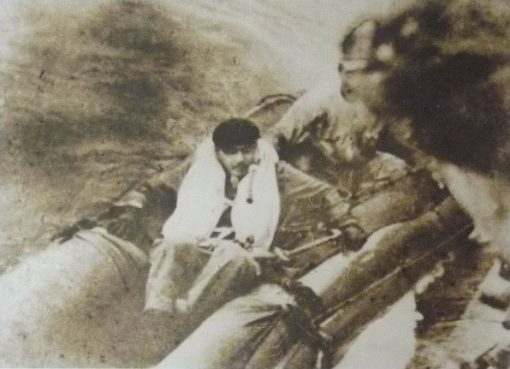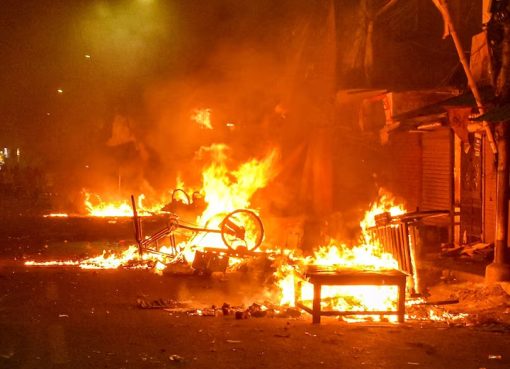(The Last Part…….)
Well, it must be accounted at the same time that he met or endeavored to meet revolutionaries or well-known mass organizers even of opposite political hues at the same time. On this occasion we must focus on a few lines of the treatise penned by Dr. Amulya Ratan Ghosh, personal tribute to his friend Dr. Keshav Baliram Hedgewar and penned in globally acclaimed “Modern Review” in 1941.
It states, “From 1909 to 1911 while he was in Calcutta his “Shantiniketan Lodge” at Kanai Dhar Lane was frequently visited by the late Shyam Sunder Chakrtavarty, the late Bepin Chandra Pal and other renowned personalities. He was intimately connected with the activities of the late Moulavi Liakat Hossain, the old veteran Muslim patriot of that age. He was greatly attached to the Ramkrishna Mission for its humanitarian work. He also worked as a volunteer during the great Damodar flood and for Ganga Sagar pilgrims. He had come to be acquainted with the youths of Bengal and been attracted by their ideal.
Dr. Hedgewar died in Nagpur of high blood pressure at the age of 51 only. Just one day before his death Subhas Chandra Bose went to see him. News of his death soon spread like wild fire. In spite of heavy shower and storm a vast number of people soon collected and carried his mortal frame in a huge procession which started towards the cremation ground at 5 p.m. His funeral pyre was laid by special permission in the Reshim Bag garden. Fire soon consumed up his mortal remains, leaving behind his glorious example to be followed by his countrymen, and his invaluable organisation, his gift to Hindudom – the Rashtriya Swayamsevak Sangh.”…(republished in Bangodesh ..https://www.bangodesh.com/2019/05/dr-k-b-hedgewar/ )
On 21 June 1940, a meeting between Subhas Bose and Veer Savarkar reportedly took place at latter’s residence in Dadar so as to “explore the possibilities of co-operation between Forward Block and Hindu Mahasabha”. It is learnt that Savarkar advised him to get rid of murky politics and do something needful and truthful to accelerate the national freedom. Instead of getting busy with removing British relics like Holwell Monument back home in Calcutta, he was suggested to move out of India and get in touch with the Axis power bloc in Europe headed by Germany or Nazis and raise an Indian Army out of tens of thousands of Prisoners of War (PoWs) for the final stage of national liberation.
What made Savarkar so confident? A few unconfirmed sources suggest that he retained a cordial relation with Rashbehari Bose residing in Japan for decades. We must concentrate on this chronicle at this juncture, “Sir Rashbehari Bose was the President of the Hindu Mahasabha, japan. While during the years 1938 to 1940 Savarkarji had been presiding over the All India Hindu Mahasabha, Sri Rash Behari Bose too continued to preside over the Japan branch of the Hindu Mahasabha. After the release of Veer Savarkarji from his internment at Ratnagiri in 1937 Sri Bose wrote to him occasionally on the advisability of the Hindu Mahasabha movement and as the result of correspondence between them Sri Bose started a branch of the Hindu Mahasabha under his own presidentship.. the correspondence between them continued right up to the declaration of war by Japan and the formation by Sri Bose of the INA [Indian national Army) in Japan even before Netaji Subhash Babu could reach Singapore. (Sources: “Two great Indian revolutionaries – Rash Behari Bose and Jyotindra Nath Mukherjee” by Sm. Uma Mukherjee and the “two great Indians in Japan” by JG Ohsawa]
All these do probably suggest that Bose was already gifted a viable planning and perhaps a few international contacts too. Even if Forward Bloc was making a steady progress by catching the attention of both public and the administration, if truth be told, the future appeared to be too incomprehensible. There was simple no end to obstacles proffered by Congress at every encounter; the dream of brining all left-leaning leaders under a strong coordination was waning as well. Sri S Satyamurti, prominent member of the Central Legislative Assembly, stated explicitly how Forward Bloc was haltering the national freedom struggle as ideal foeman in each way possible. Bose, according to a section of historians, counted on Jayprakash Narayan a bit but he was also found to be singing to Congress tune and opposing growth of any faction within the parent party. Above all, Jawaharlal Nehru termed Bloc as an evil.
Nevertheless, coordination with revolutionary groups for years provided Bose an edge over others rendering Forward Bloc an impetus to be the predominant mouthpiece of radicalism gradually. To inhibit this storm., British thought it wise to incarcerate him in jails. A spell of hunger strike helped him to move out of the prison in the first week of December, 1940 and on the night of January 17, 1941 Bose had his final escape from his resident at the Elgin Road in Calcutta could shouldering the strictest surveillance of CID and British Intelligence against its strongest enemy. There have been many confounding reports as regards the historic escape. While his family credits its own members for this success, a few reports unearthed of late depict something different.
But even during this hour and also while founding and moving along with the INA (Indian National Army) indigenous revolutionaries or Bengal Volunteers according to British police documents, played a magnanimous role. But the situation changed once Nazi Germany attacked Soviet Union; Communist Party of India changed its stances overnight terming the imperialist war as People’s War and as a result several secrets of the Great Escape Plan was divulged to the police. As a consequence, leading members of the Bengal Volunteers including Satyaranjan Bakshi, Jyotish Guha, Sashanka Dasgupta, Chandrashekhar Sengupta got arrested by April/May of 1942 and faced worst persecutions. Both Satyaranjan Bakshi and Jyotish Guha got excruciated and were deported first to the Lahore Fort followed by the Delhi Fort. (India in Axis Strategy: Mialn Hauner)
At this hour Sri Rajendra Kumar Guha deserves special mention. Following his death on May 10, 1983 at Bansberia, West Bengal an obituary was published in The Statesman, dated May 15, 1983.
The report states in glowing colors, “Rajendra Kumar Guha, whose involvement in the freedom struggle spanned four decades, died at Bansberia on Tuesday. He was about 100 and survived by his son.
One of the founders of Bengal Volunteers (then known as ‘Mukti Sangha’) in 1905, he functioned as the quarter-master-general of the Party with the collection of arms and ammunition. His main source of supply in those days was the Chinese smuggling trade in small arms. He transferred his activities to Burma for some years at the behest of the party.
After independence, Mr. Guha built a small house at Rajarhat – Bishnupur. It is virtually a Hall of martyrs decorated with portraits of heroes of the freedom struggle. In the courtyard are clay statues of Benoy, Badal and Dinsesh with whom Mr. Guha was very closely associated.”
(To be continued…….)

শ্রী অনিমিত্র চক্রবর্তী হলেন একজন সাংবাদিক ও বিভাগীয় লেখক (columnist) এবং বেঙ্গল ভলান্টিয়ার্সের এক সক্রিয় কর্মী।






Comment here
You must be logged in to post a comment.